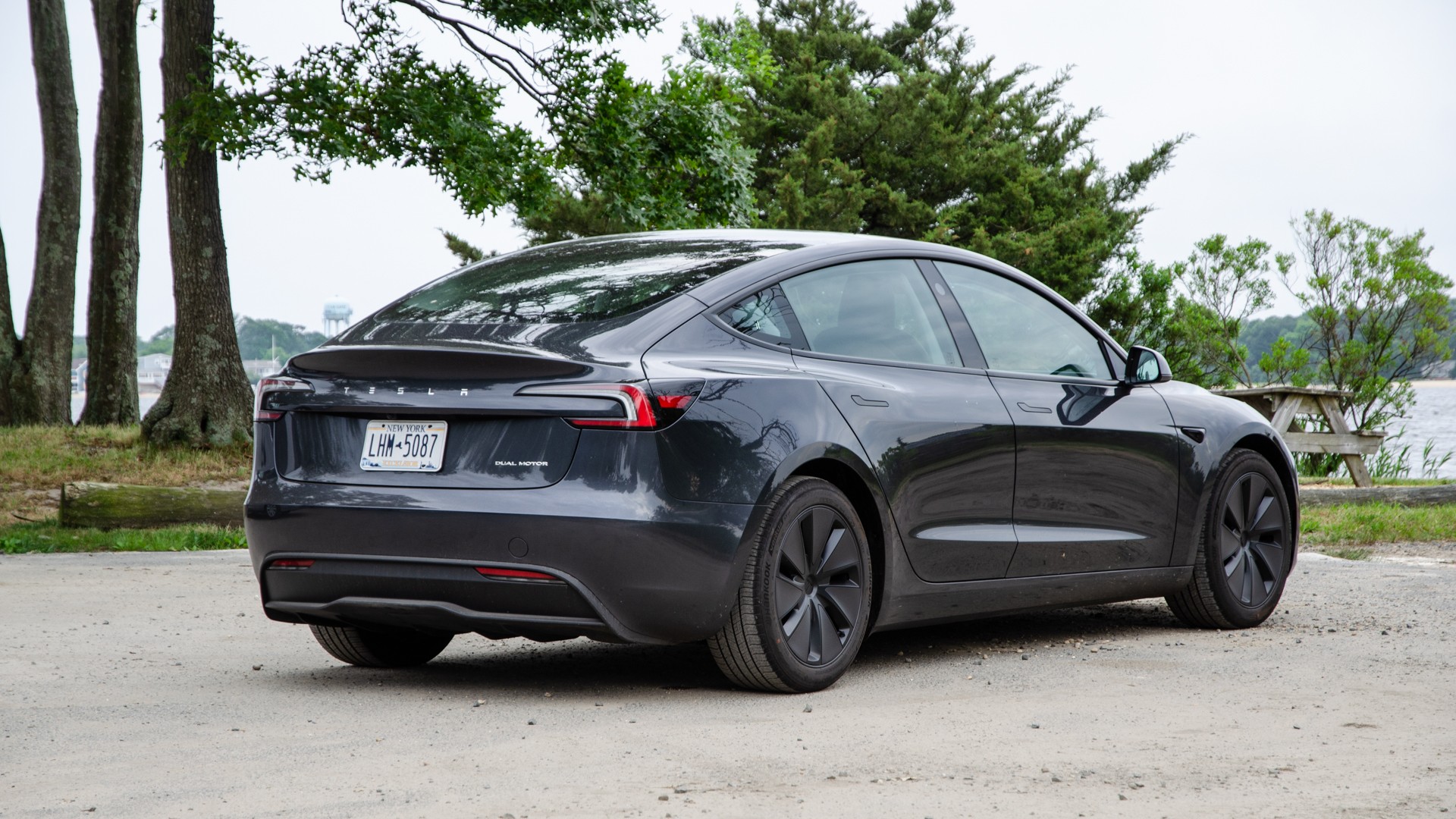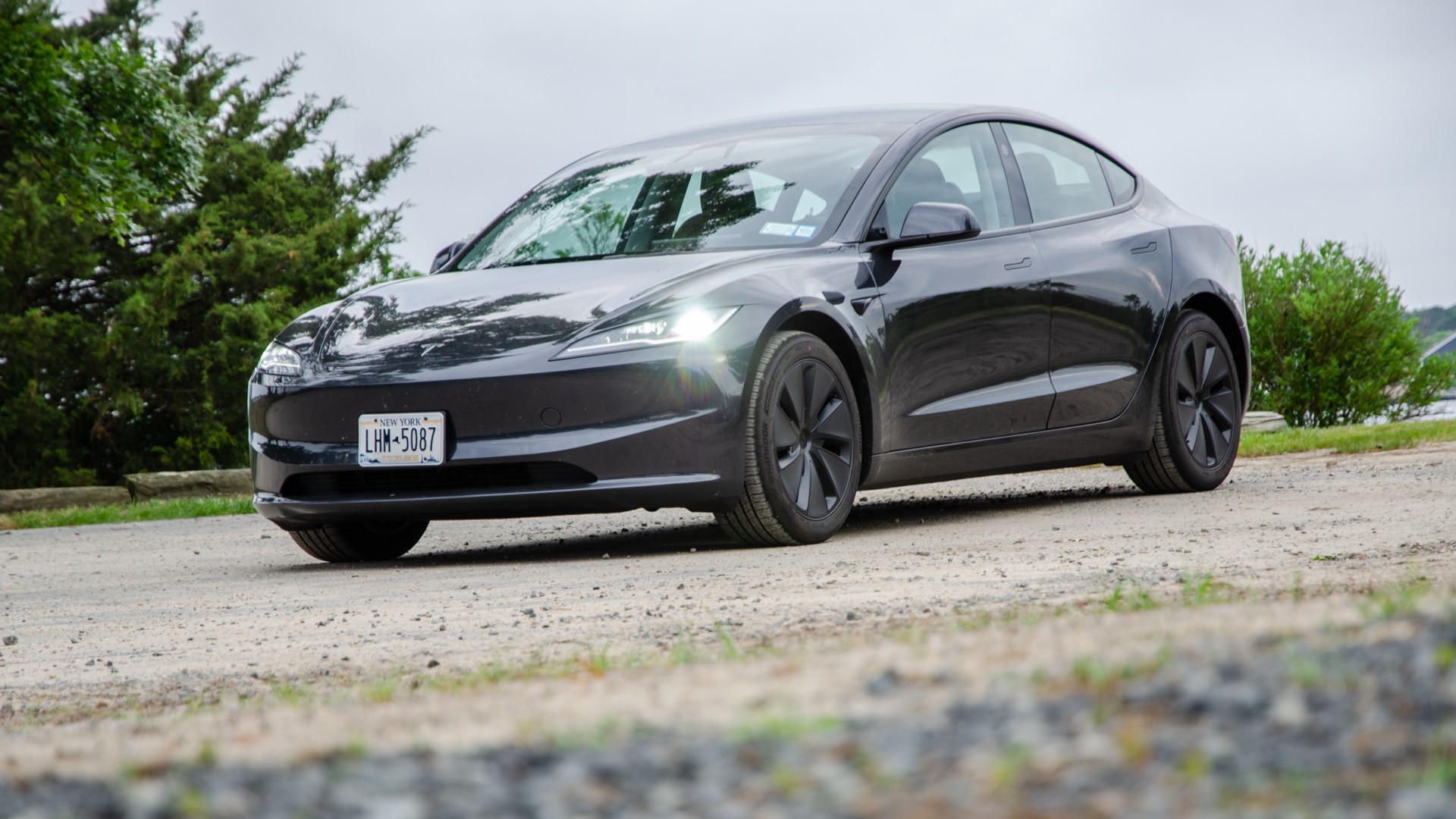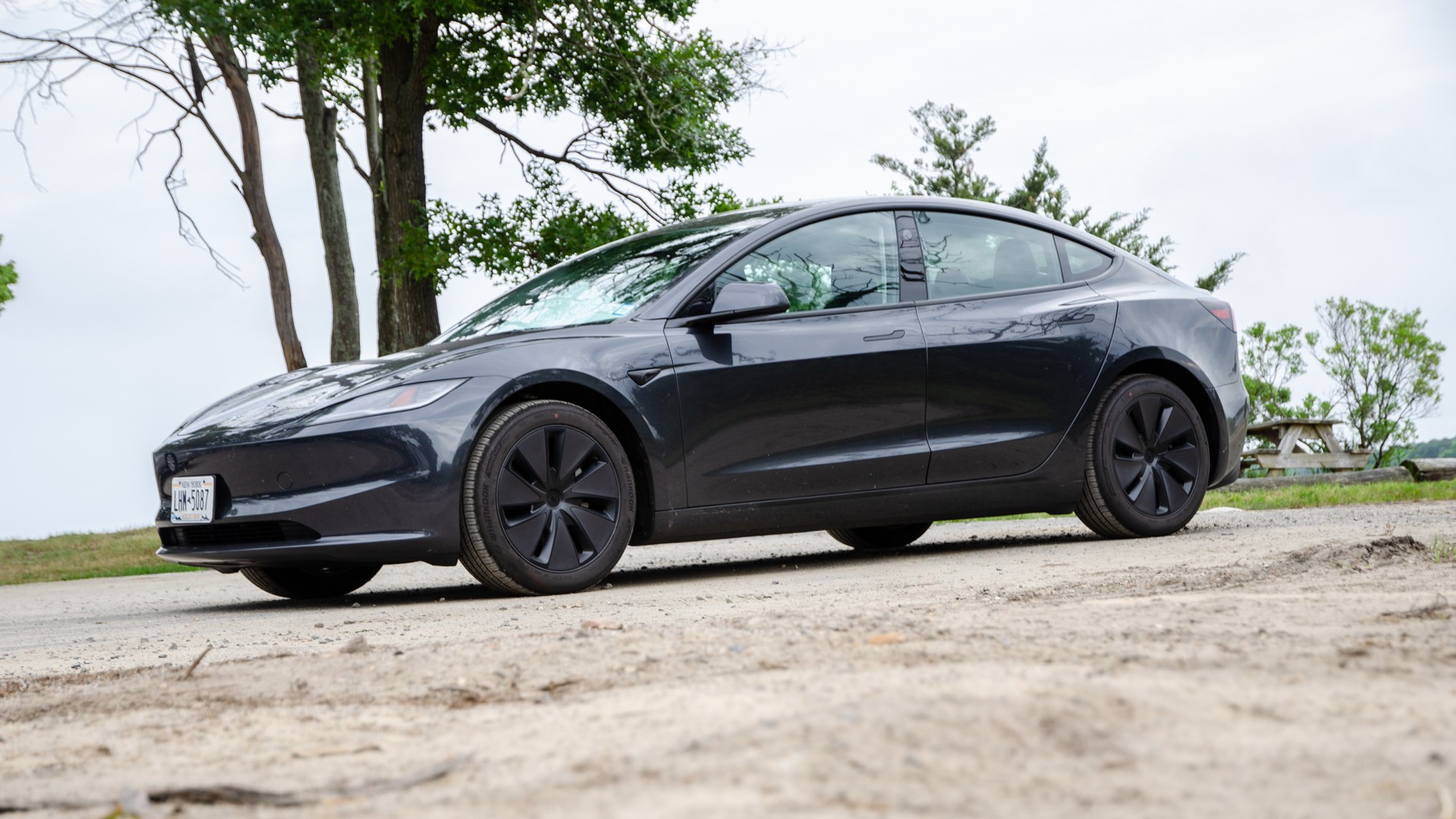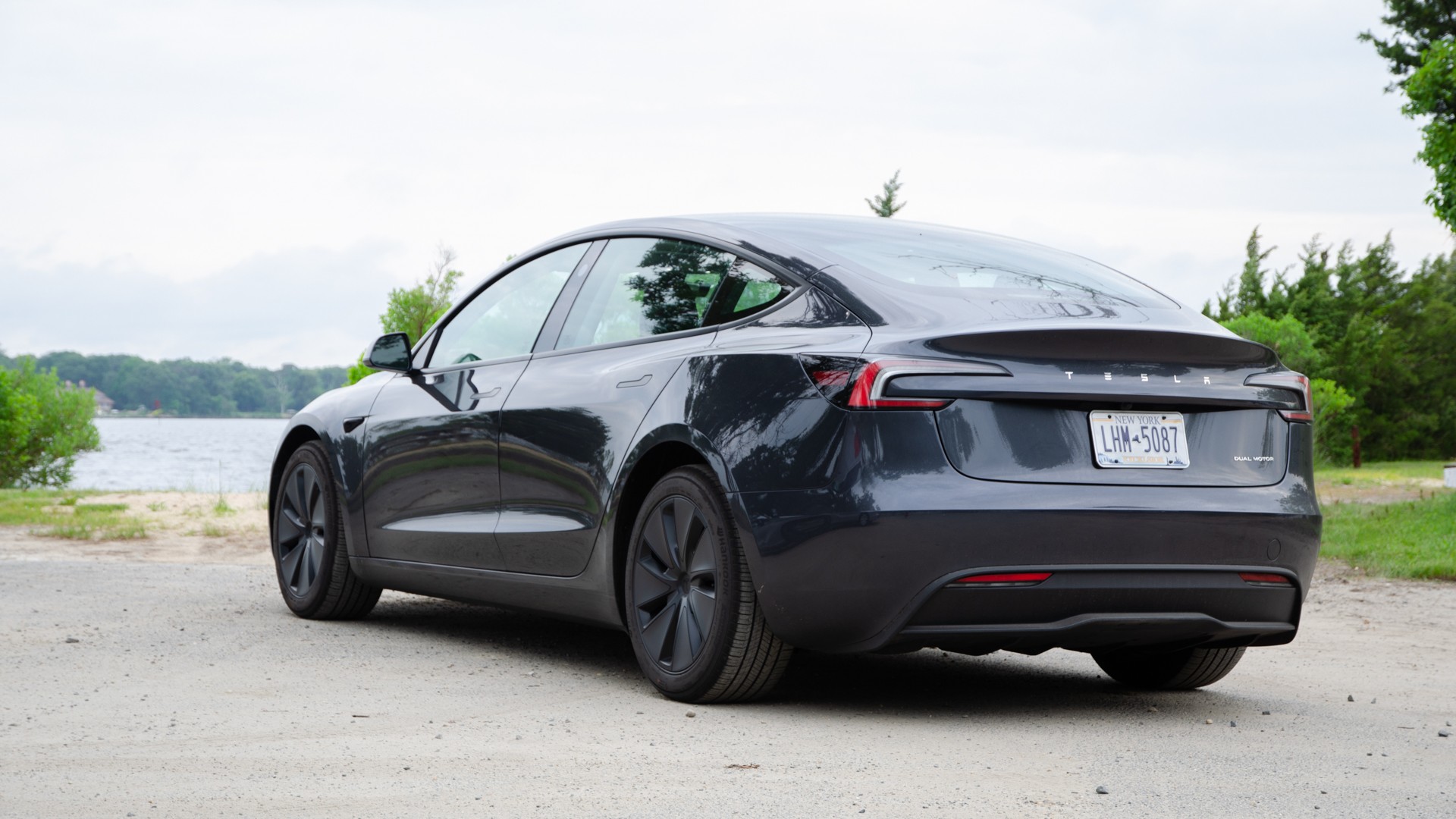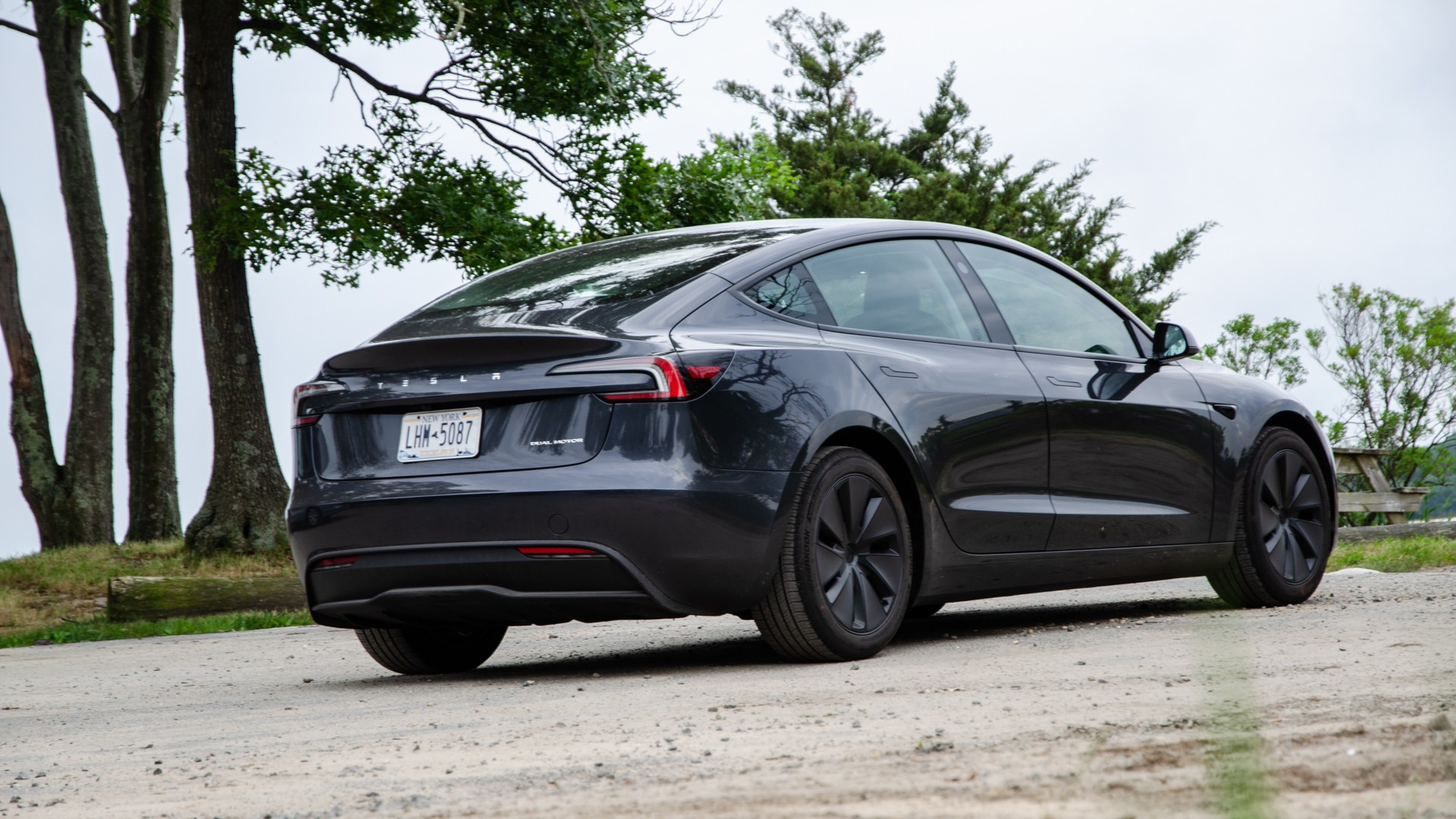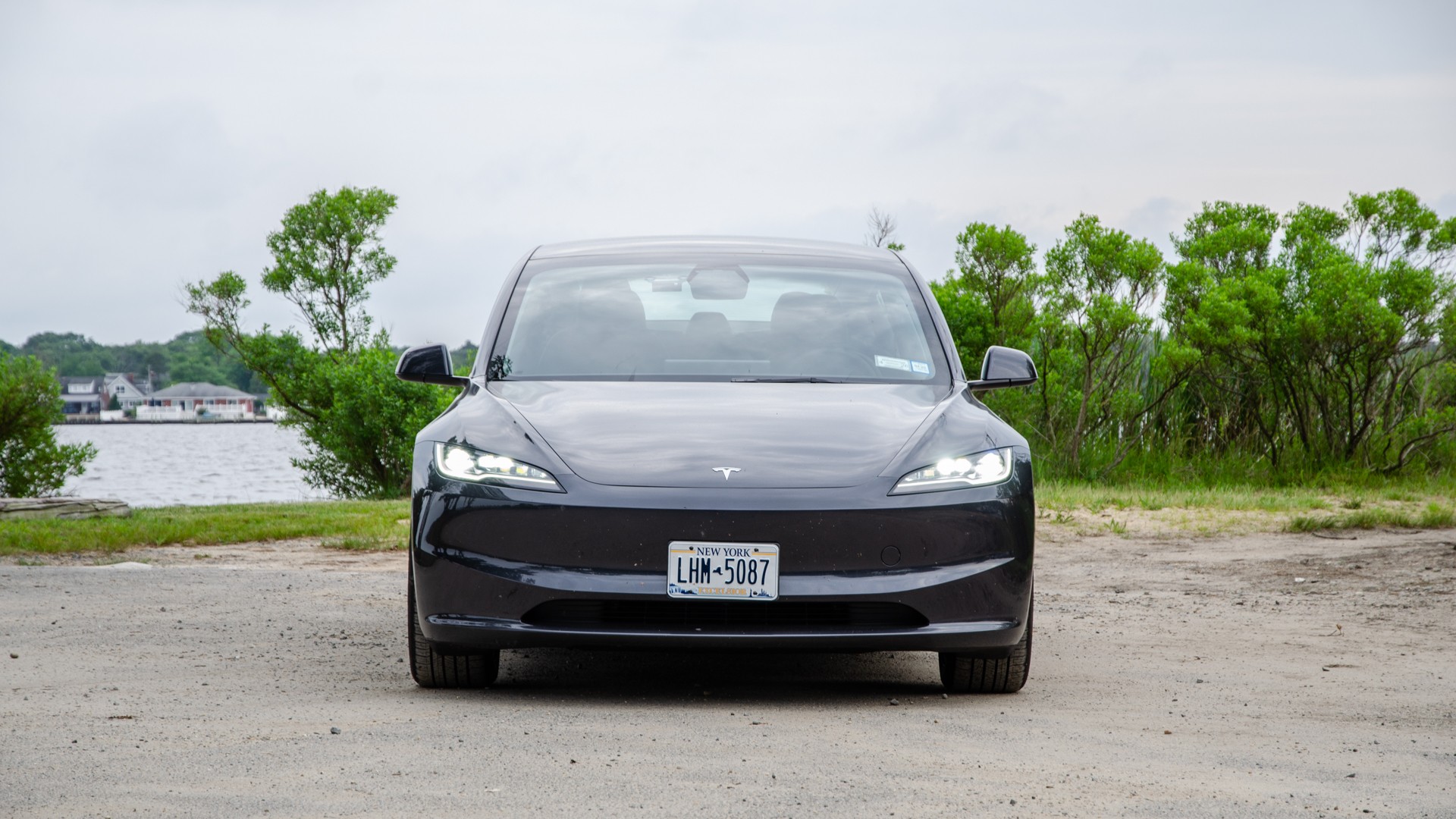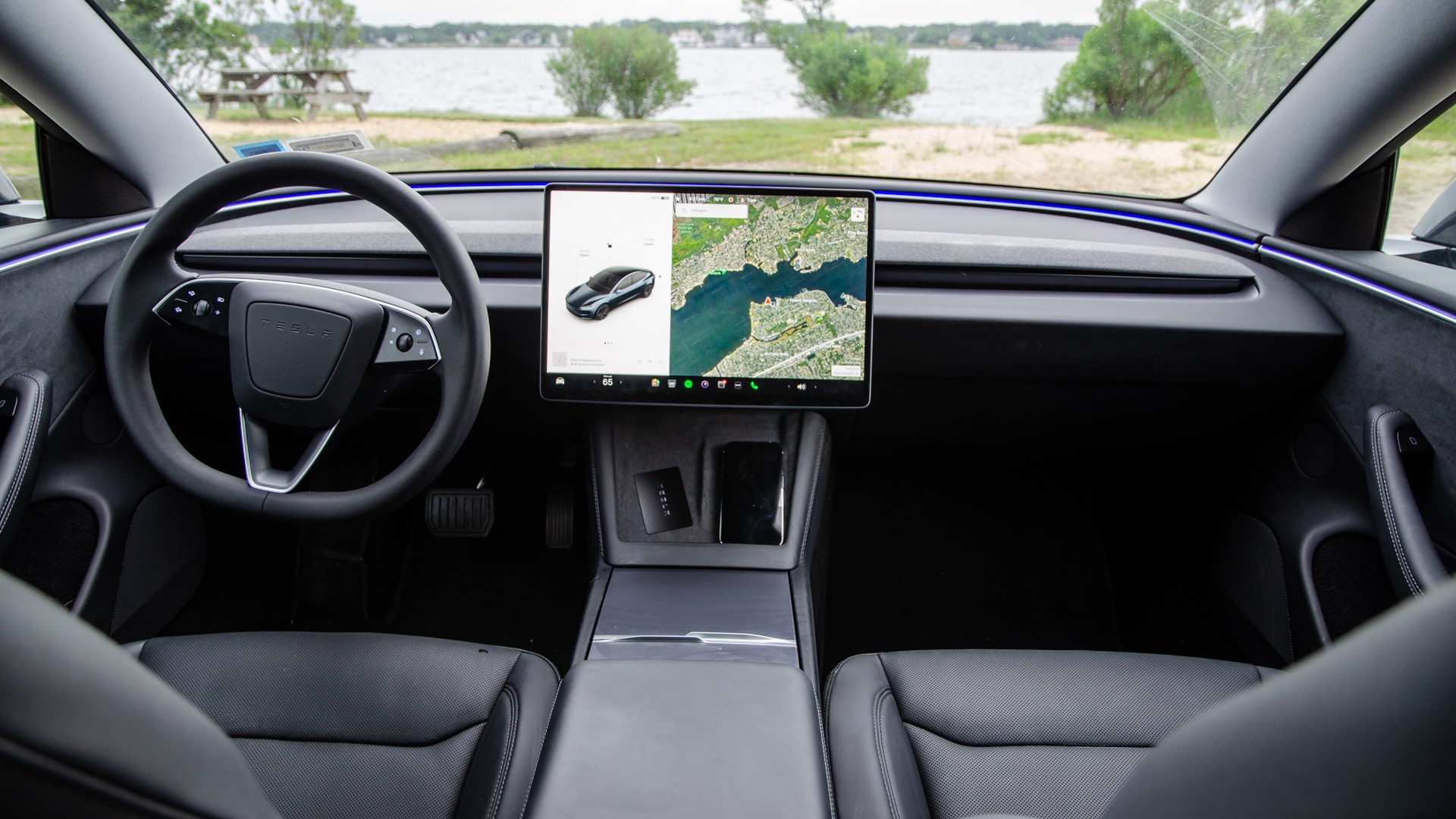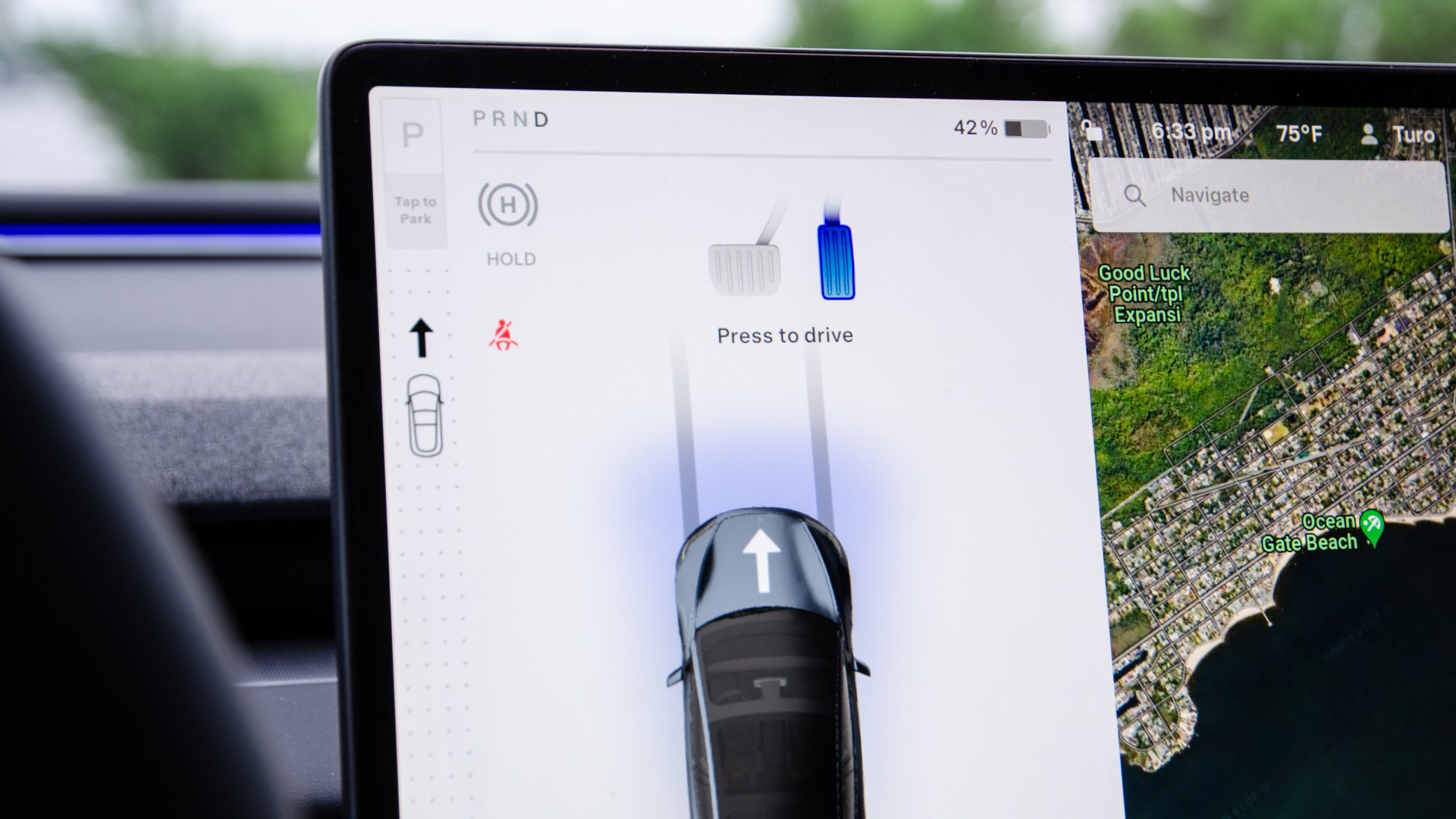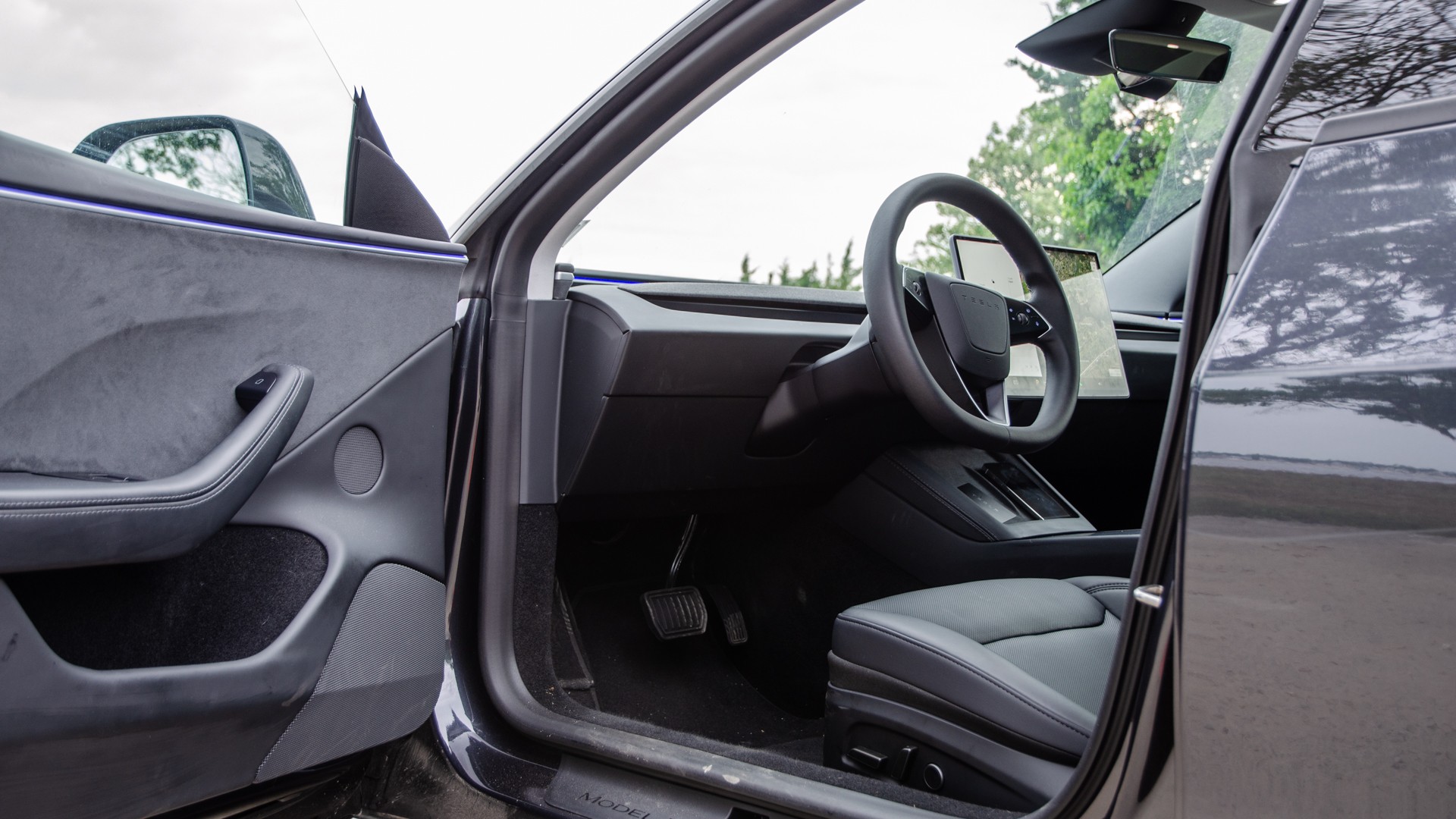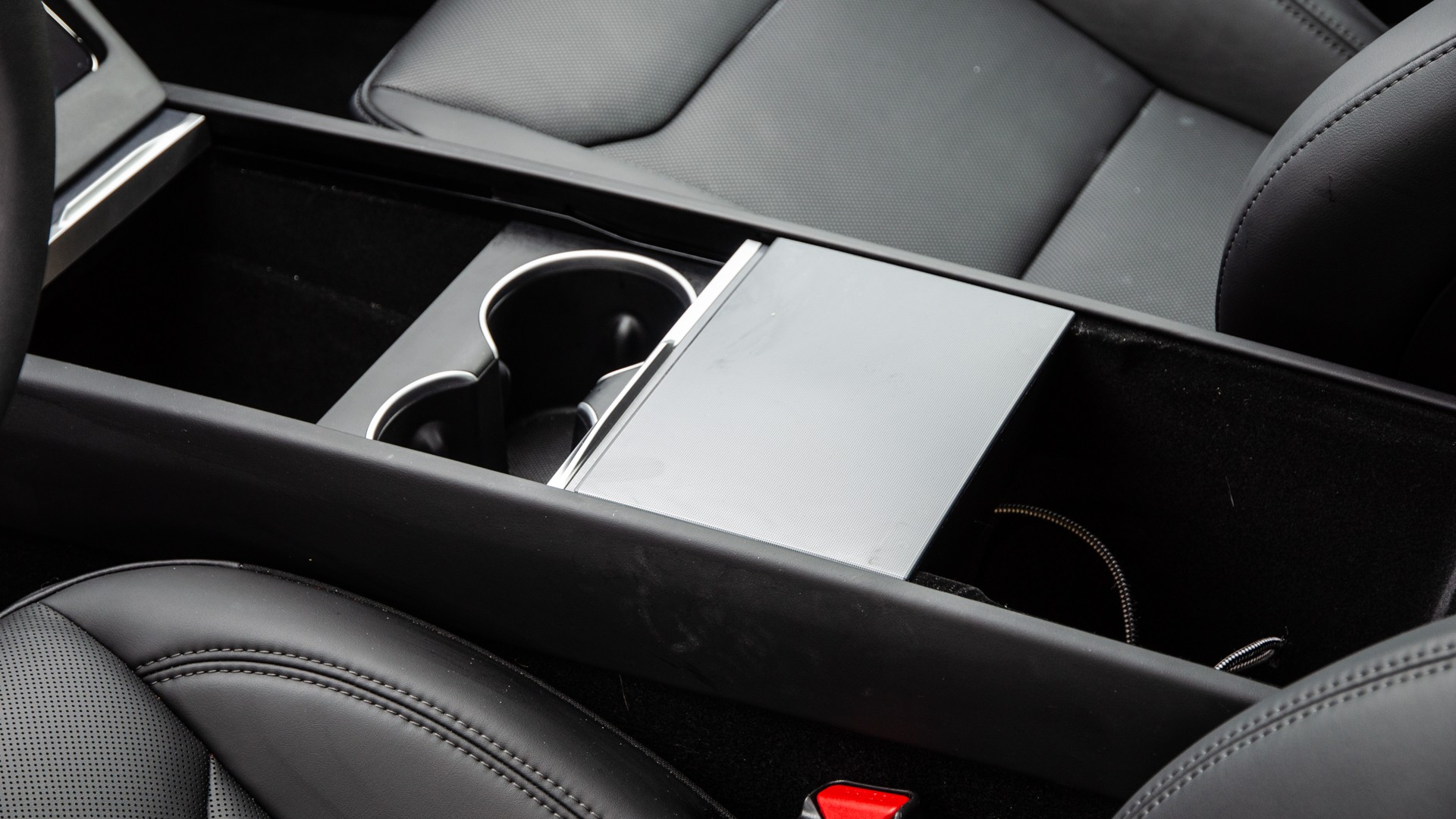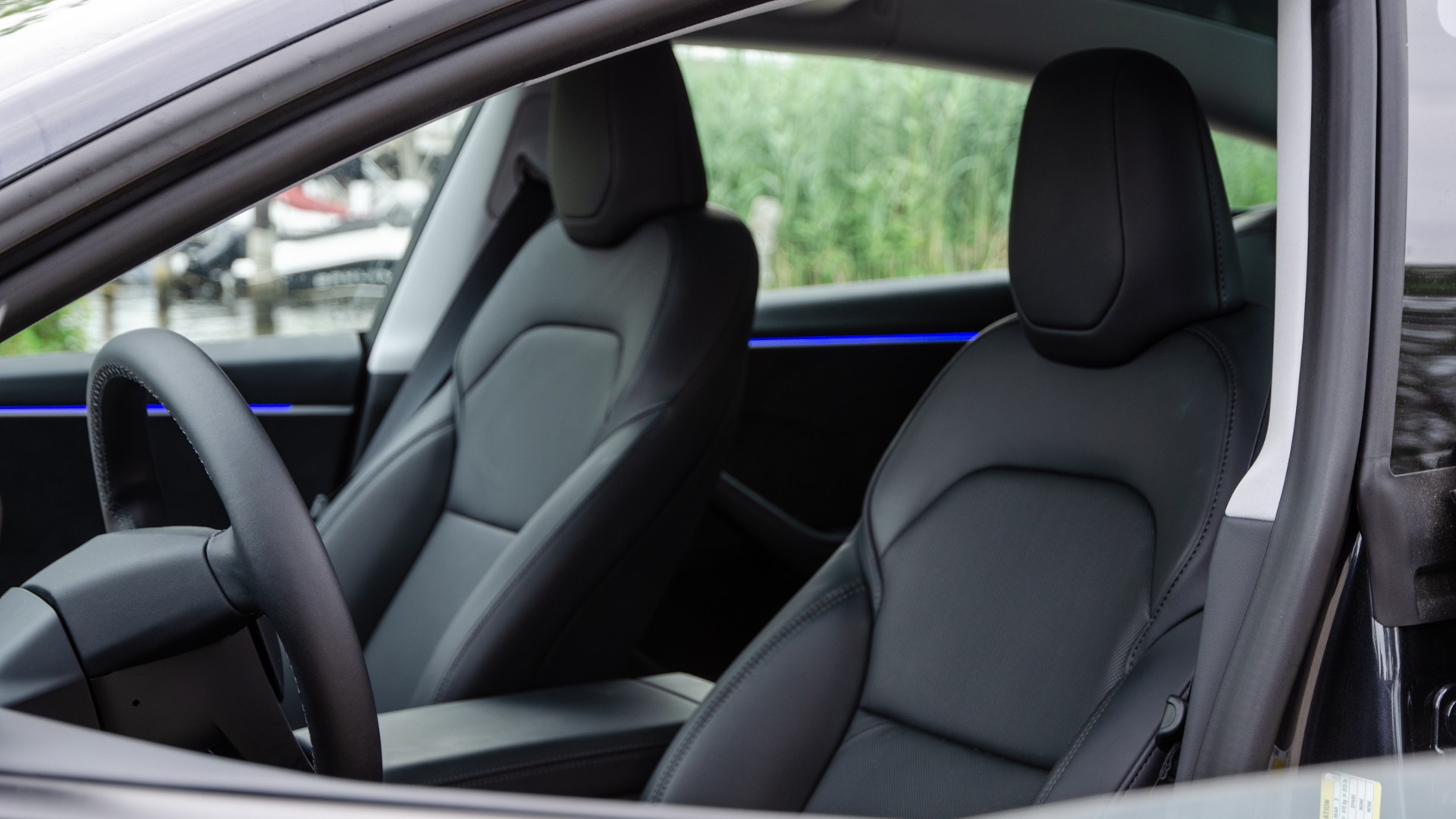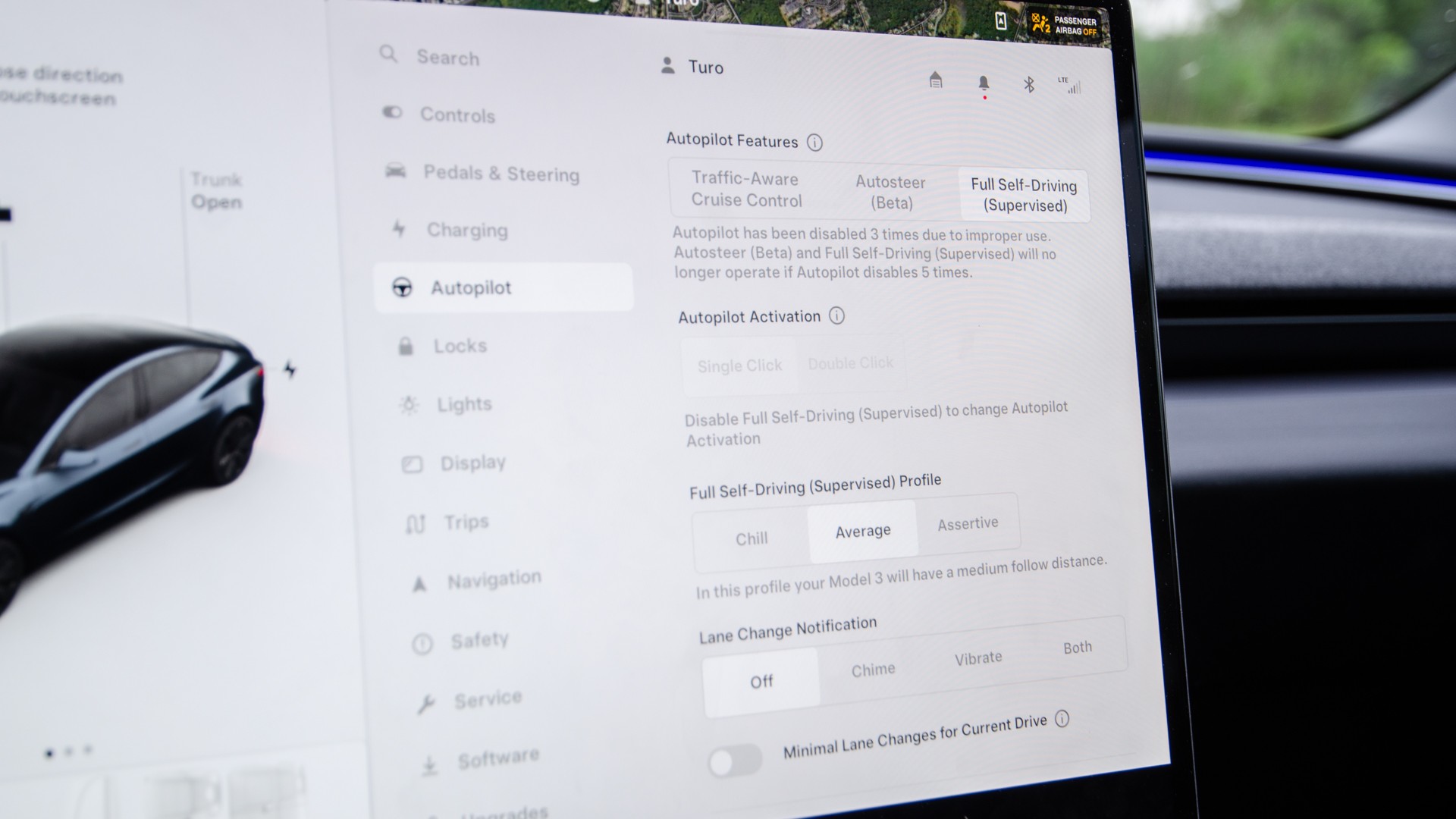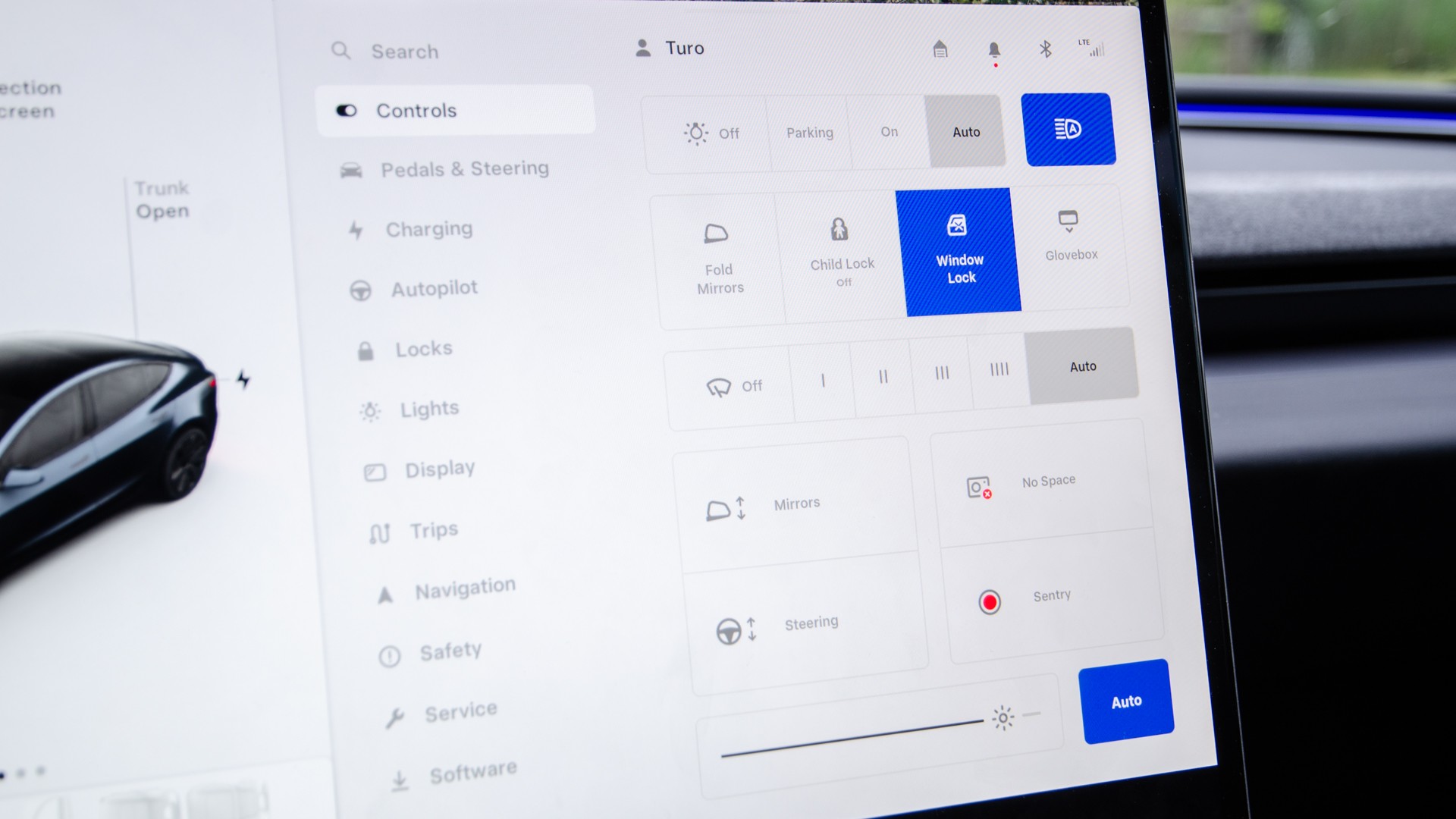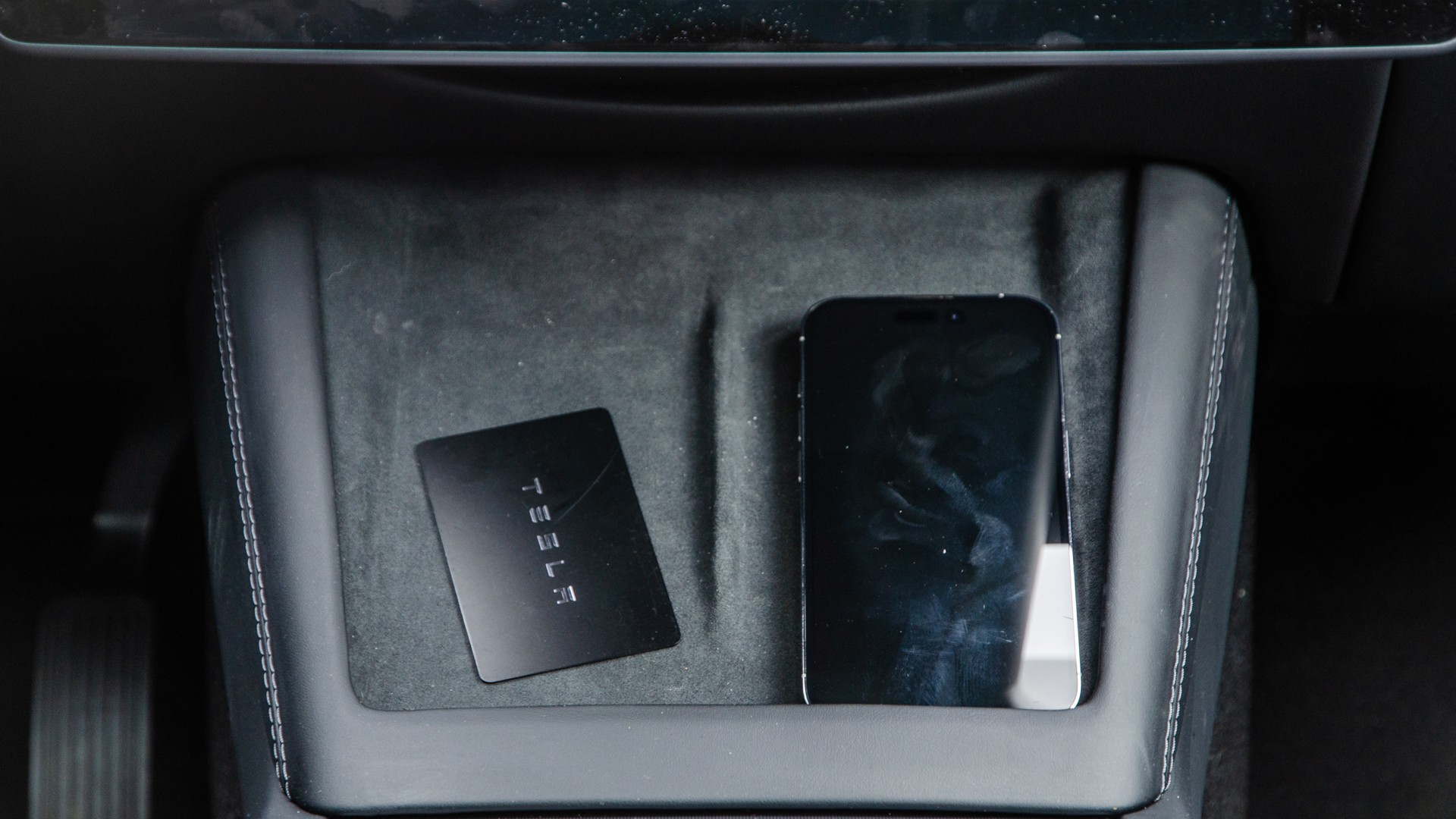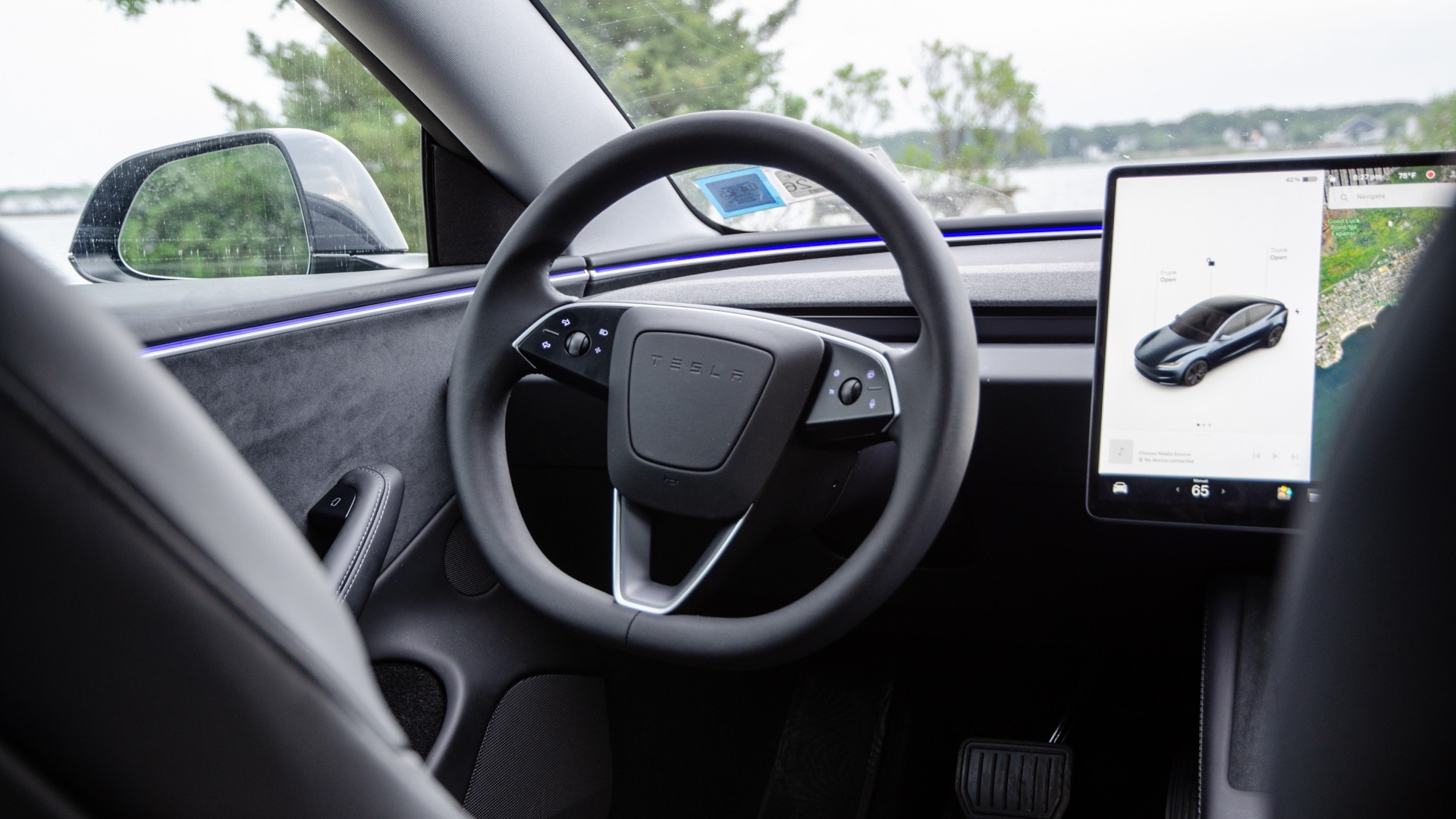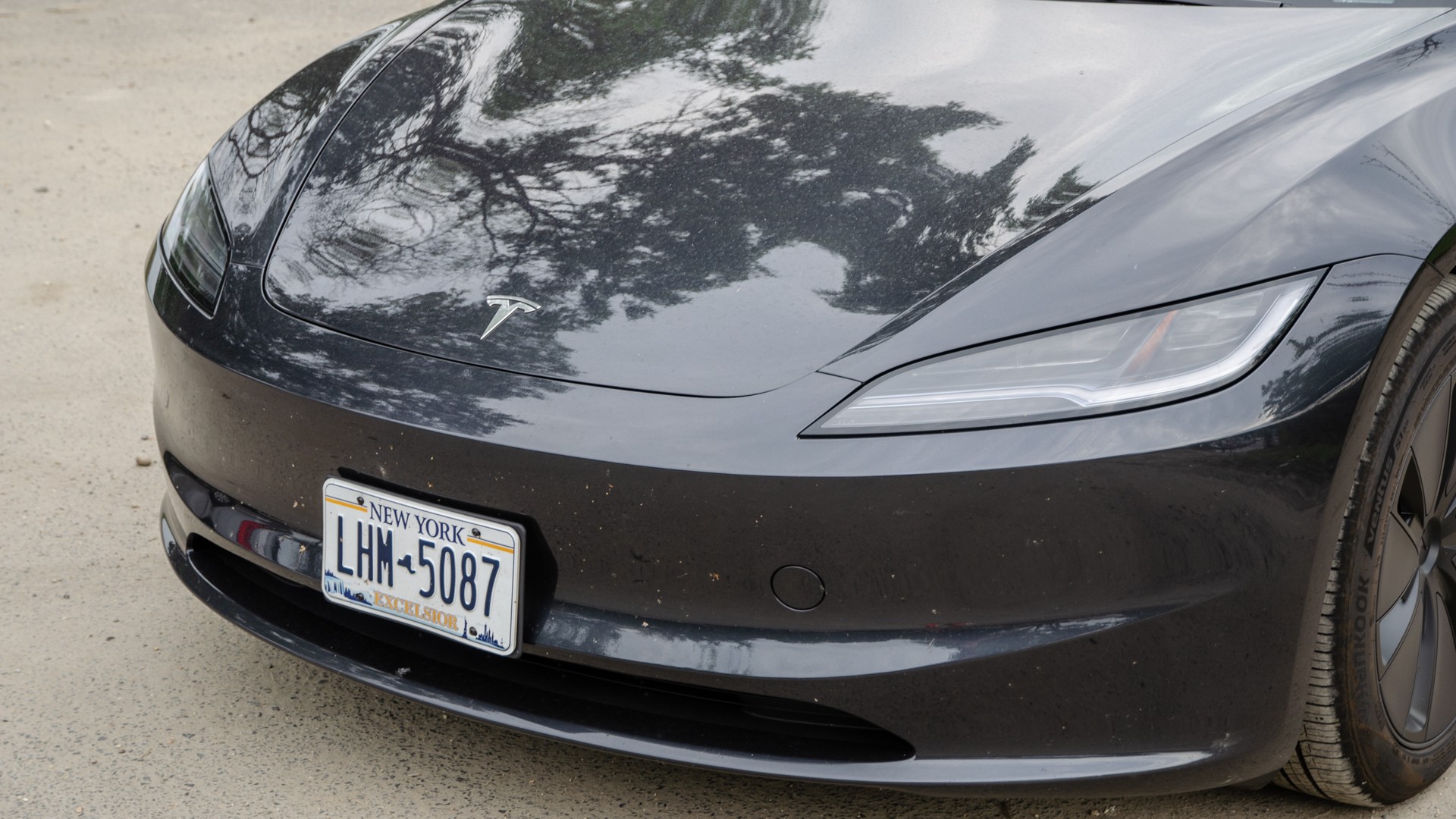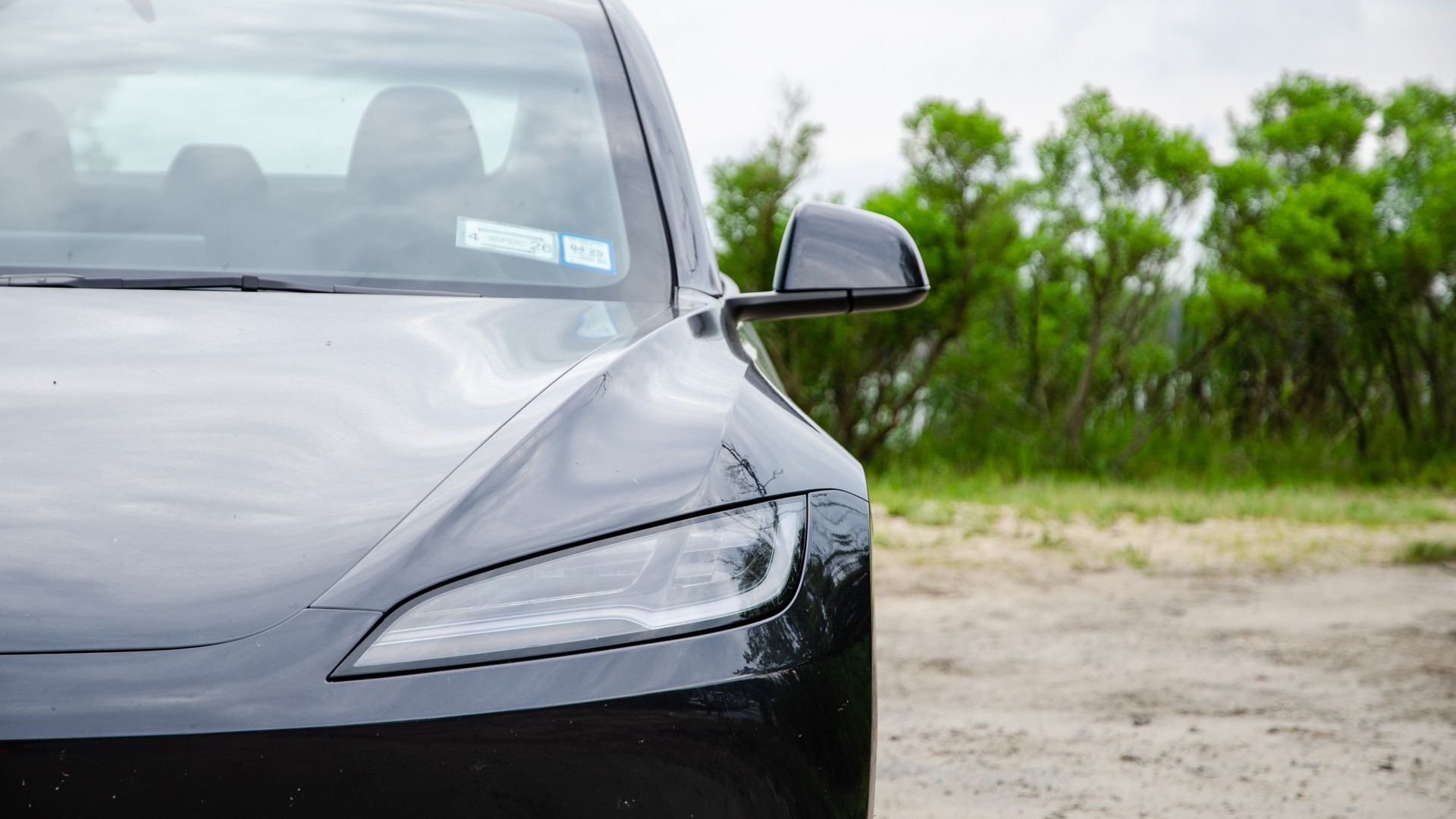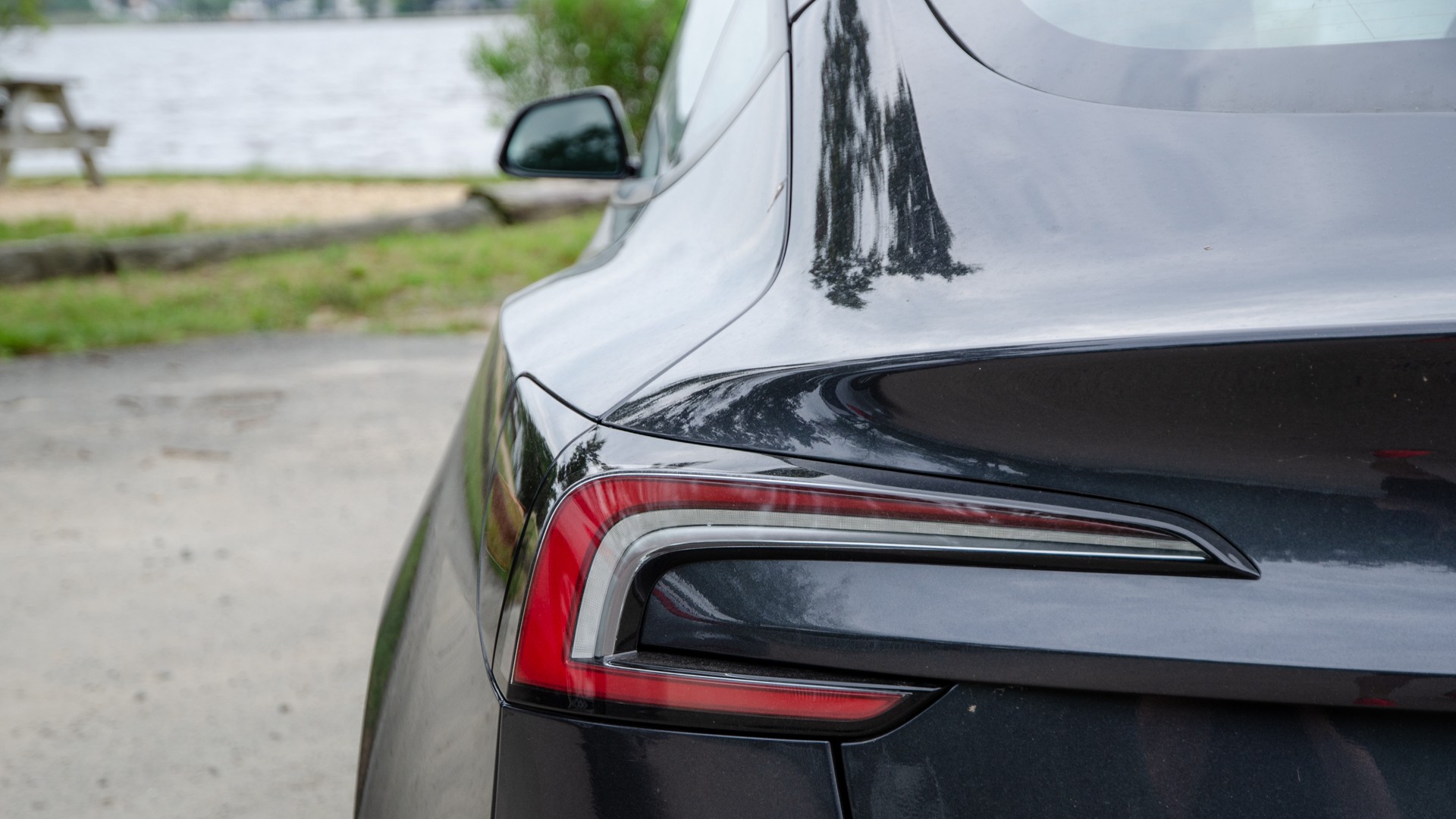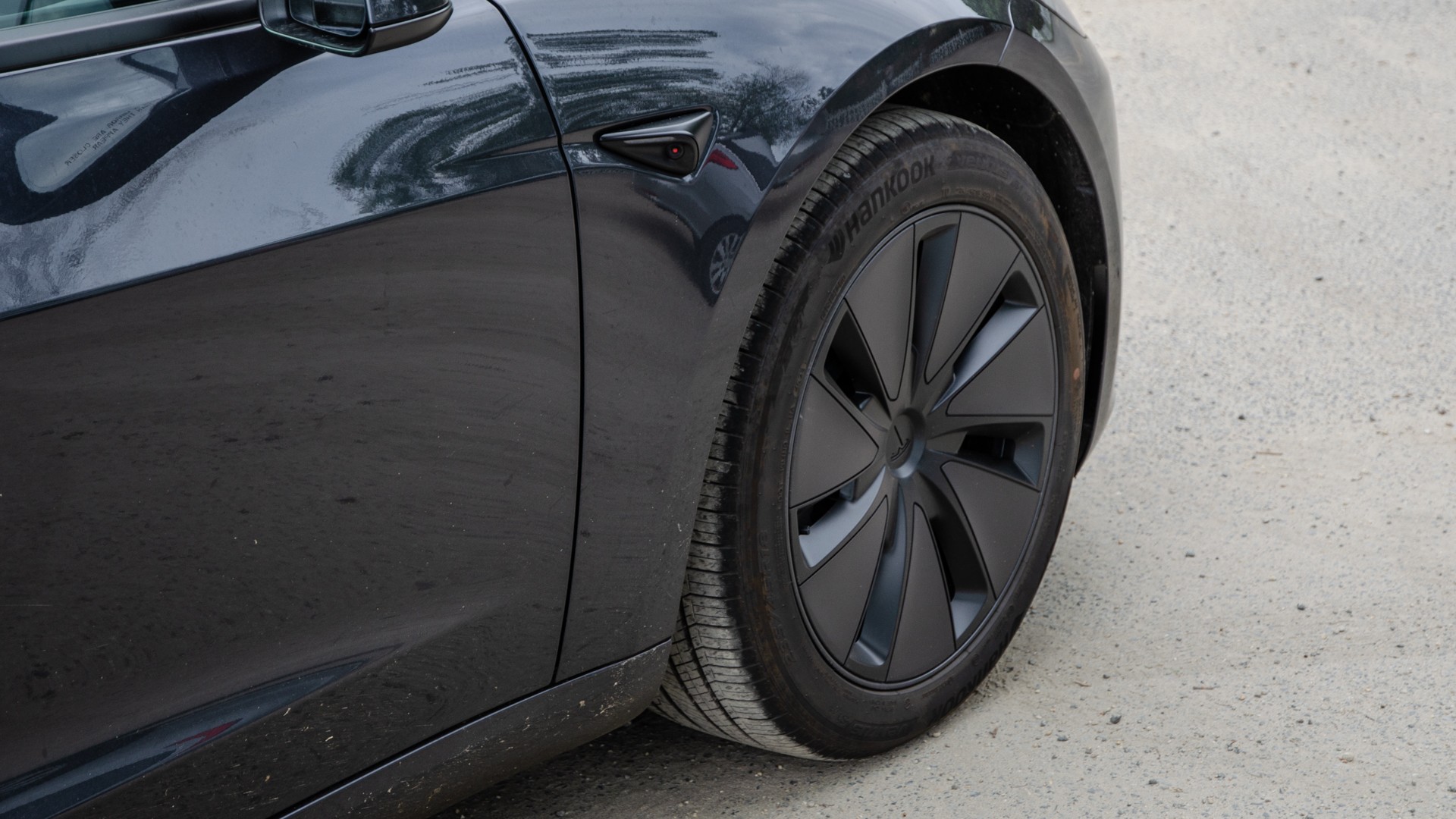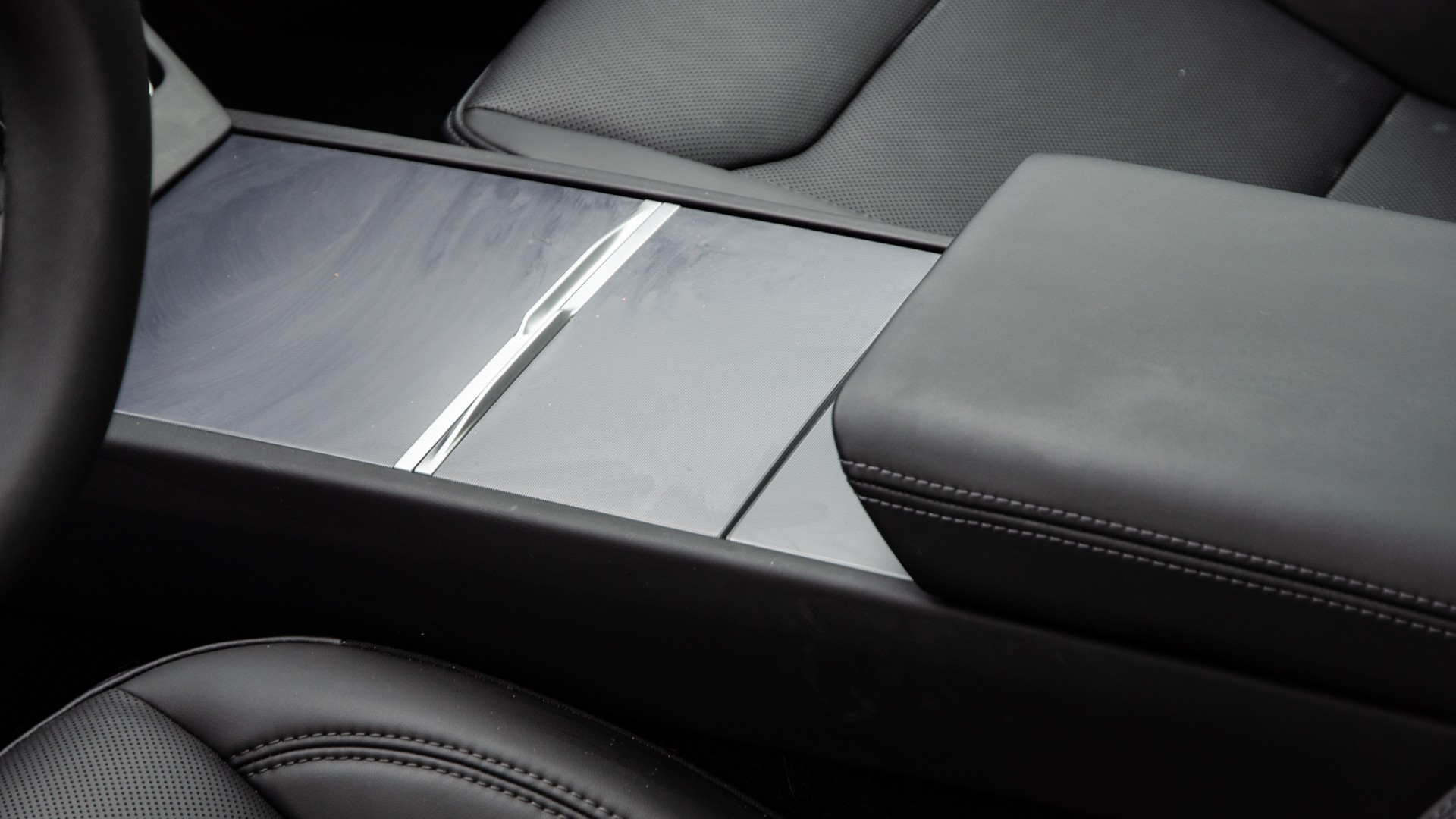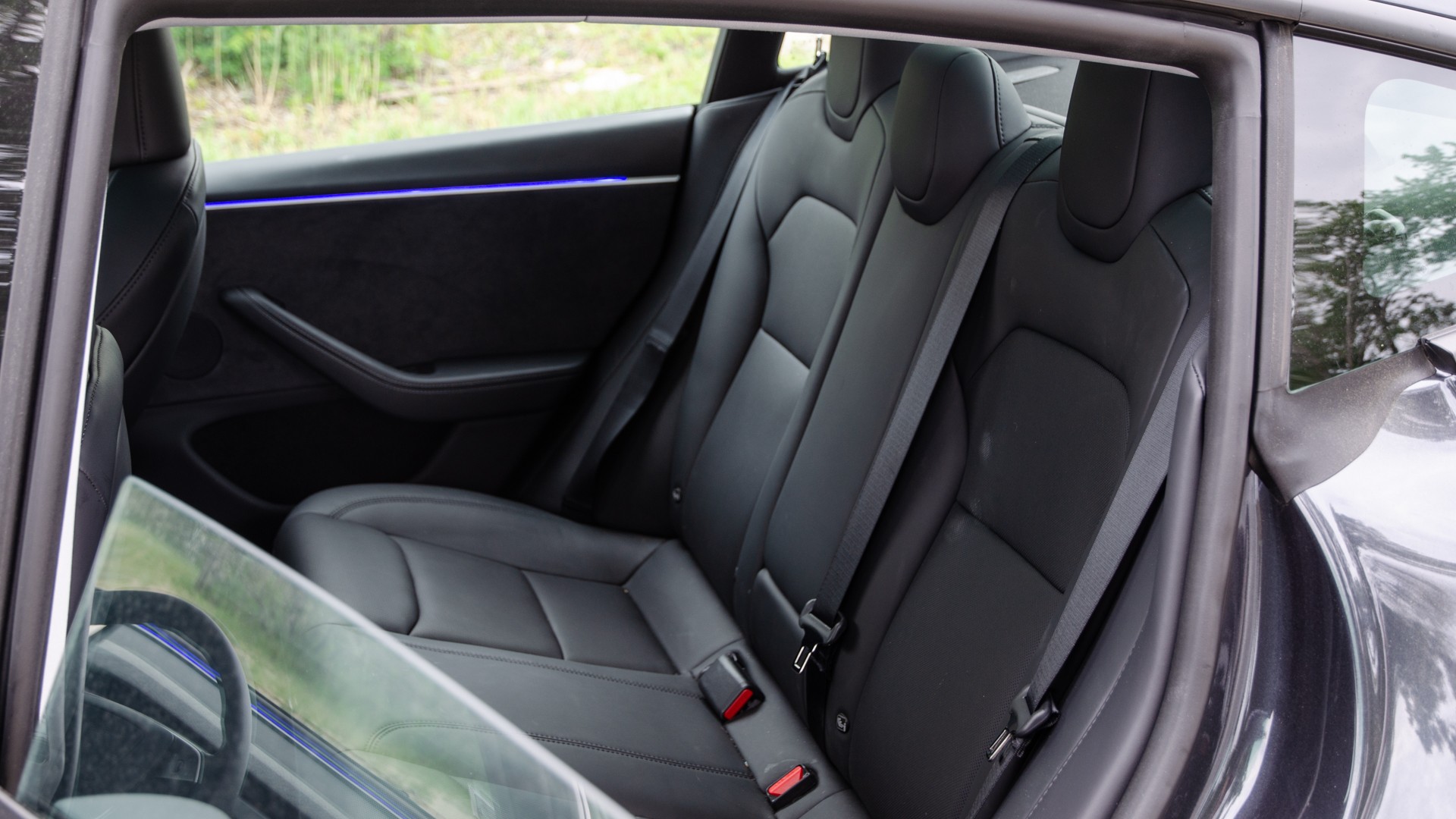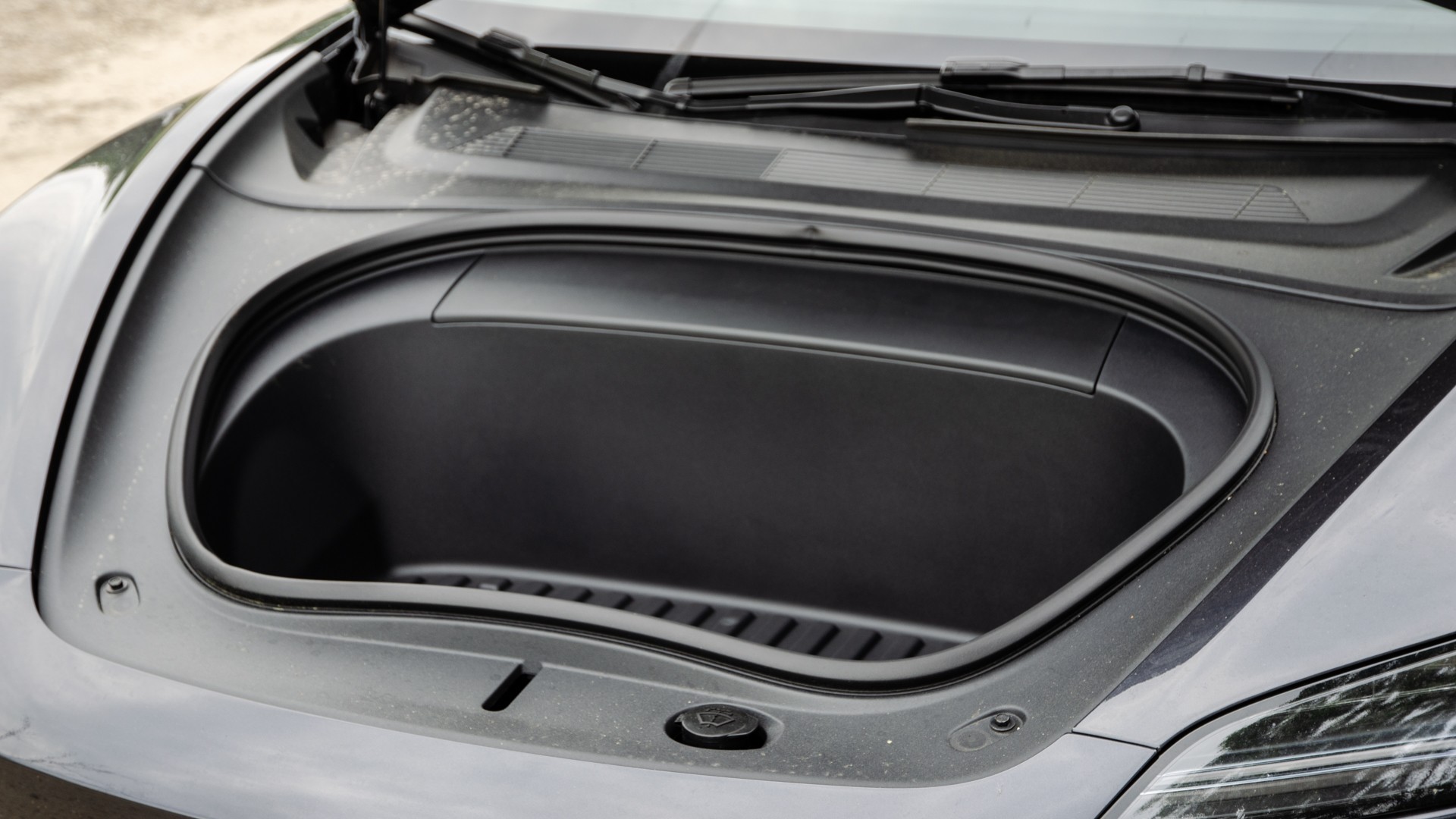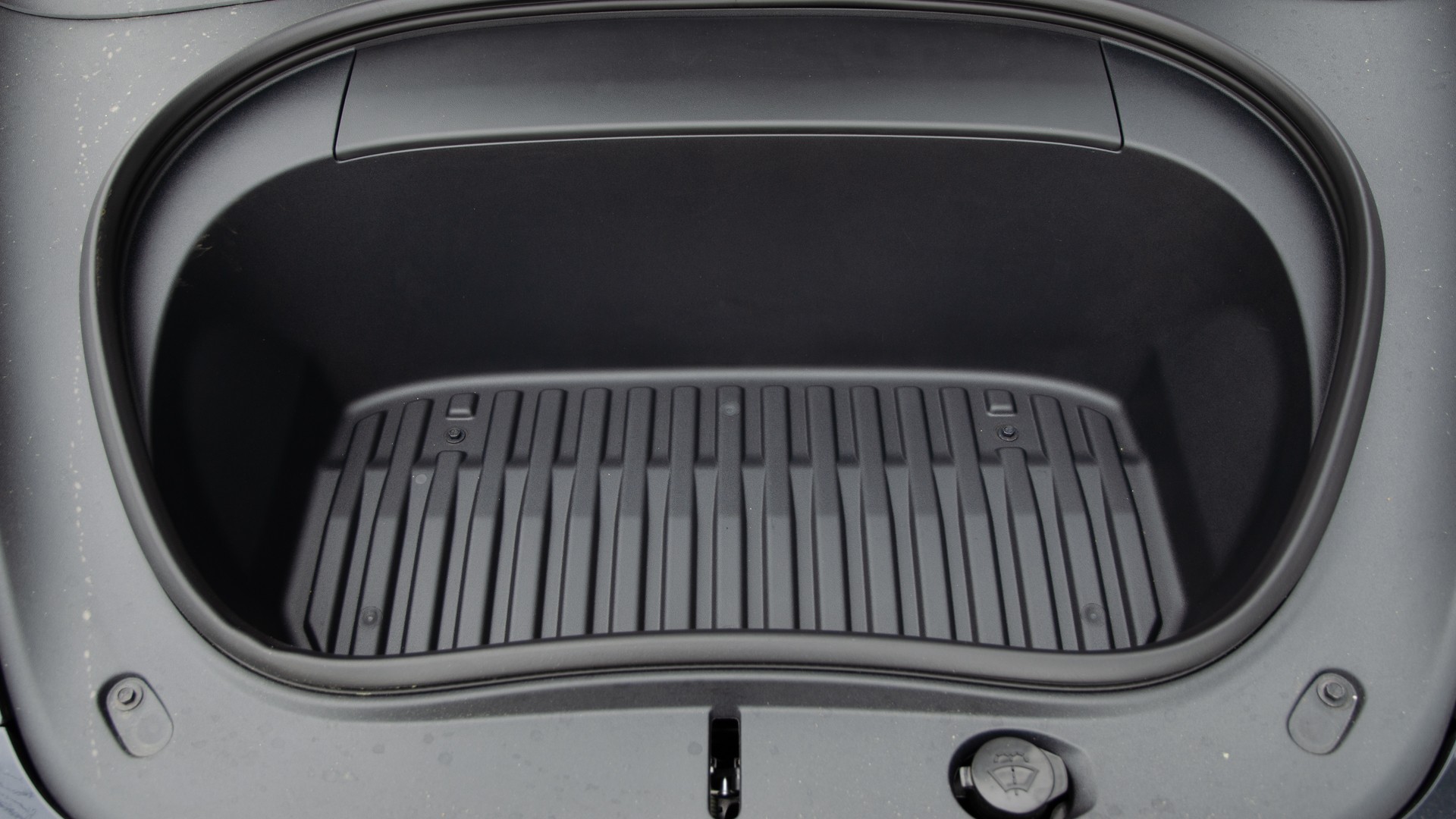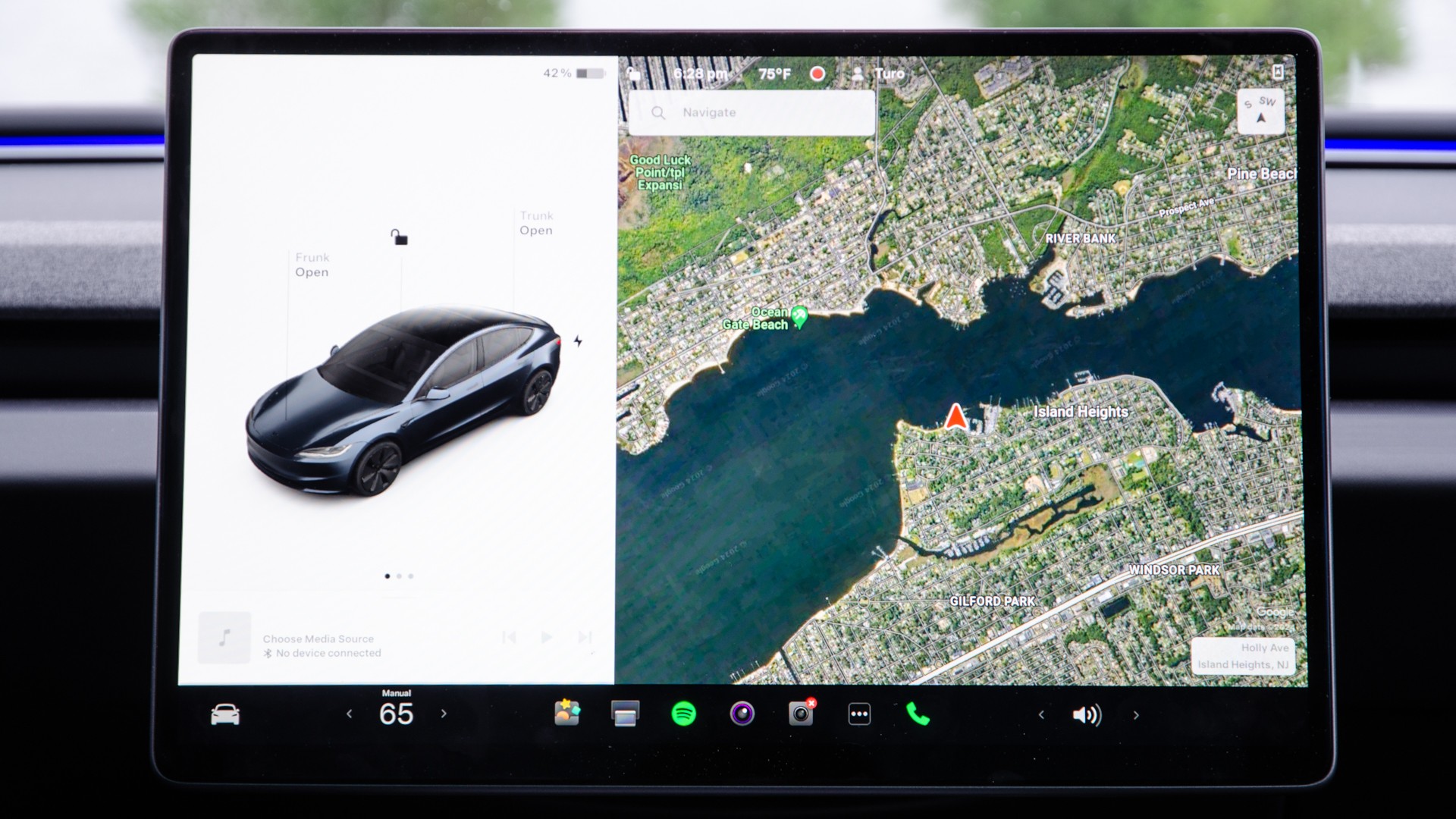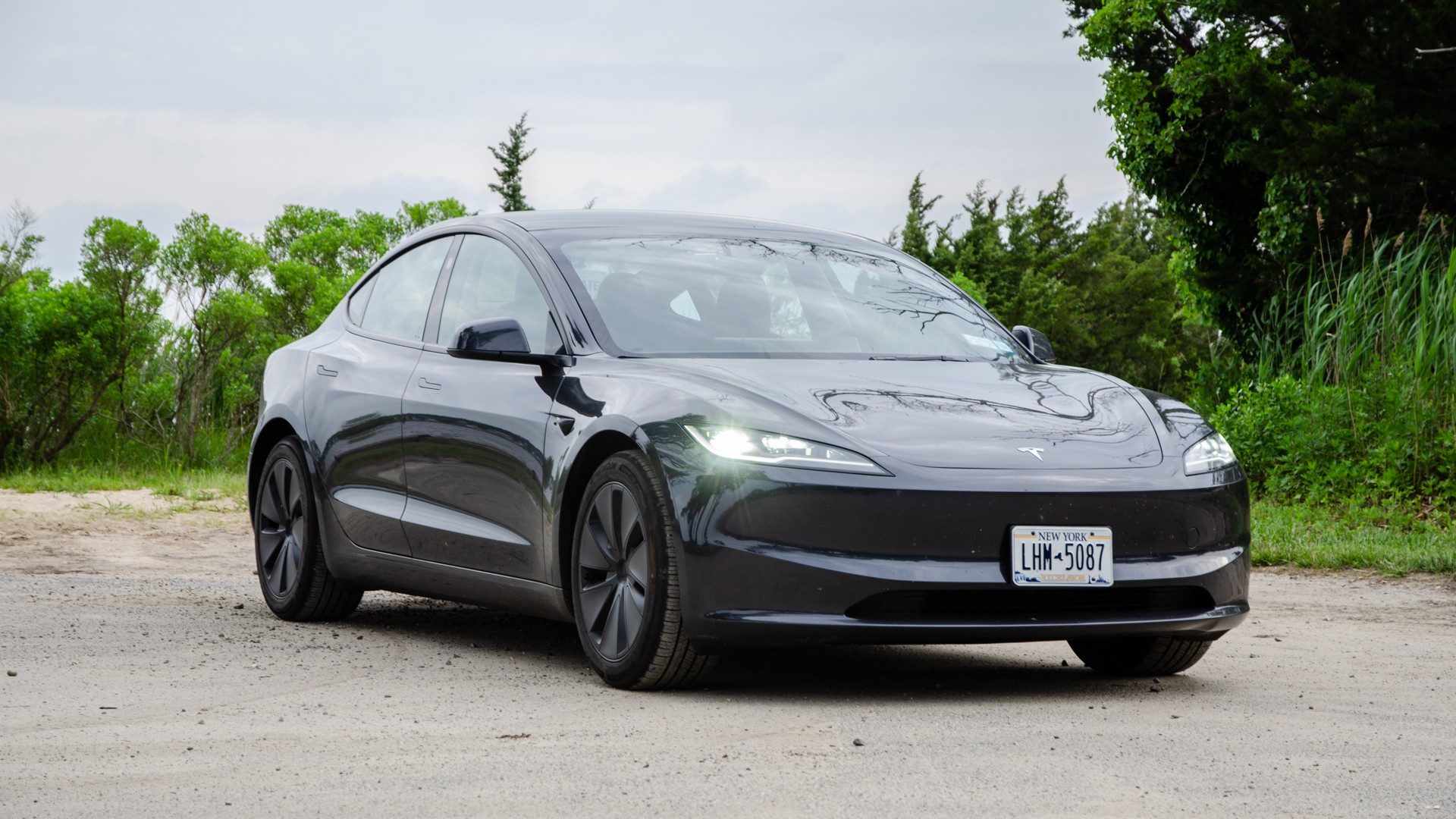When the Tesla Model 3 first burst onto the scene, it wasn’t just another electric vehicle; it was a statement. It redefined what an EV could be – desirable, accessible, and genuinely exciting. For years, it stood unchallenged, setting benchmarks for range, technology, and performance in the electric car market. Mainstream automakers played catch-up, leaving Tesla to dominate the narrative. However, the landscape has shifted dramatically. The 2024 Tesla Model 3, also known as the ‘Highland’ refresh, arrives in a world teeming with competitive EVs. Has Tesla maintained its edge, or has the competition finally caught, and perhaps even surpassed, the once-revolutionary Model 3?
In this review, we delve into the 2024 Tesla Model 3 Long Range AWD, equipped with the controversial “Full Self-Driving” system, to see if it still holds its crown in the increasingly crowded electric sedan segment. After spending a considerable time behind the wheel, we assess its updates, driving dynamics, interior, technology, and value proposition in today’s market. Is the refreshed Model 3 still the compelling choice it once was, or are there now more enticing options available, like the Hyundai Ioniq 6, waiting in the wings? Let’s explore.
Back to Basics: Evolution of a Modern Icon
Rewind to 2017, and the launch of the Tesla Model 3 was a pivotal moment. It wasn’t just another car launch; it was a cultural event. While the Model S paved the way, the Model 3 was meant to democratize the Tesla experience, bringing electric mobility to a broader audience. It promised and delivered a combination of impressive range and relatively accessible pricing, shaking up the automotive industry. However, in the fast-paced world of EVs, six years is an eternity. Traditional luxury brands like BMW, Mercedes-Benz, and Audi, Tesla’s initial rivals, would have cycled through complete model generations in the same timeframe.
Finally, Tesla has delivered a significant update with the 2024 Model 3 Highland. On paper, the refreshed Model 3 boasts improvements across the board. Yet, in practice, the story is more nuanced. While advancements are evident, certain aspects also represent steps back, creating a mixed bag of updates.
From an aesthetic perspective, the 2024 Model 3 undeniably refines the original design. The sharper, slimmer headlights and more sculpted front end give it a more modern and aggressive stance. The rear taillights are also sleeker, lending a more premium feel. While the overall ‘jelly bean’ silhouette remains, and the grayscale color palette might not excite everyone, the Highland refresh is a step forward in terms of visual appeal compared to its predecessor.
Stepping inside, however, the updates are less convincing. While the minimalist Tesla interior is a signature design element, the execution in the Model 3 continues to be a point of contention. Material quality and ergonomics remain areas where the Model 3 lags behind competitors.
The critique of the Model 3’s interior isn’t about subjective style preferences; it’s about fundamental usability and perceived quality. The absence of traditional stalks and buttons, with almost every function relegated to the central touchscreen, is a design choice that prioritizes minimalism over driver convenience. Adjusting even basic functions like wipers, mirrors, or steering wheel position requires navigating menus on the touchscreen, diverting attention from the road. The user interface, while visually similar to a tablet, becomes cumbersome and distracting while driving.
The most controversial ergonomic change in the 2024 Model 3 is the relocation of the gear selector to the touchscreen. Engaging drive or reverse now requires a swipe on the screen, a process that can be unresponsive at times and adds unnecessary steps to a simple driving action. While redundant gear selector buttons are subtly integrated into the headliner, their placement is far from intuitive and could lead to accidental activation of drive functions when intending to use the dome lights. This design decision raises serious questions about driver-centric design and intuitive controls.
Driving Dynamics: Performance and Handling
Despite the interior controversies, the 2024 Model 3 retains the exhilarating performance that Tesla is known for. The dual-motor configuration delivers a potent 394 horsepower and 377 lb-ft of torque, launching the car with impressive urgency. The 0-60 mph sprint is dispatched in a brisk 4.2 seconds, placing it firmly in the performance sedan category, nearly matching the BMW i4 M50 in acceleration. For most drivers, the dual-motor Model 3 offers more than ample power, blurring the lines with the higher-performance models.
However, when it comes to handling and overall driving engagement, the Model 3’s dynamics are more of a mixed bag. While competent, it doesn’t quite live up to the sports sedan comparisons it once received. The steering, while accurate, feels overly light and artificially boosted, lacking in genuine feedback and road feel. The quick steering ratio can also make the car feel twitchy at higher speeds, requiring constant micro-corrections.
The ride quality is firm, bordering on brittle. On smooth pavement, the Model 3 feels planted and stable. However, encountering bumps and imperfections unsettles the car, lacking the composure and comfort found in rivals like the BMW i4 or Polestar 2. The ride is more comparable to the Hyundai Ioniq 6, which is acceptable but not class-leading. While the Model 3 can navigate twisty roads adequately, the overall driving experience lacks the nuanced engagement and driver involvement expected from a true sports sedan.
Autopilot and “Full Self-Driving” Capability
Tesla’s Autopilot, especially with the optional “Full Self-Driving” (FSD) package, remains a significant talking point. In its most advanced setting, the system demonstrates impressive capabilities in lane keeping, traffic following, and even navigating stop lights. The system’s ability to display its perception of the surroundings and its intended actions is commendable, providing a degree of transparency to the driver. Features like automatic lane changes to maintain set speeds are also genuinely useful.
However, “Full Self-Driving” remains an overstatement. During testing, the system exhibited occasional lapses in judgment, such as misinterpreting lane splits and attempting to take highway exits unintentionally. Correcting these errors can be jarring, as the steering system resists driver input before disengaging Autopilot entirely. Furthermore, the throttle response, even in “Chill” mode, can be overly aggressive, requiring driver intervention in certain situations. While Autopilot is undoubtedly advanced and among the leading systems available, it still falls short of true self-driving and lags behind systems like GM’s Super Cruise in terms of refinement and consistent performance.
High Points and Low Points
One area where Tesla continues to shine is its charging infrastructure. The Tesla Supercharger network is unmatched in its ease of use and reliability. Charging is as simple as plugging in the car – no apps, accounts, or credit card fumbling required. This seamless charging experience is a major advantage and explains why other manufacturers like Ford and Rivian are adopting the Tesla charging standard. Beyond charging, the Model 3’s brisk acceleration and nimble handling in urban environments are definite positives. Forward visibility is excellent, and features like the wireless phone charging pad and rear-seat entertainment screen add convenience and appeal.
However, the Model 3 is not without its drawbacks. The interior, particularly for its price point, feels underwhelming. The material quality and overall ambiance are notably less premium than many competitors, even in lower price brackets. Ergonomic issues persist, and build quality concerns, like sharp edges on interior panels, detract from the overall ownership experience. Furthermore, the cabin can be noisy at highway speeds, with noticeable wind and tire noise despite the double-pane windows. Even practical aspects like car seat LATCH point accessibility are less user-friendly than they should be.
Market Positioning and Competition
The Tesla Model 3 occupies a competitive price point in the EV market, starting at around $40,000 before incentives. The Long Range AWD version tested here starts closer to $50,000. Standard equipment is reasonably generous, including heated seats, the central touchscreen, and the rear display. Crucially, the Model 3 currently qualifies for the full $7,500 federal tax credit in the US, enhancing its value proposition.
Option choices are streamlined, primarily focused on powertrain, paint color, wheel design, and the “Full Self-Driving Capability” package. The FSD option adds a significant $8,000 to the price, while non-standard paint colors also carry extra costs. With options like FSD and premium paint, the as-tested price of the Model 3 can easily climb into the high $50,000s.
The primary competitor to the Model 3, considering price, performance, and overall refinement, is arguably the Hyundai Ioniq 6. The BMW i4 offers a more luxurious interior and sharper driving dynamics, but at a significantly higher price point. The Polestar 2 also competes in this segment, nearing the BMW i4’s price range for the AWD version. The Hyundai Ioniq 6, in its fully loaded dual-motor configuration, undercuts the Model 3 in price, while offering a more conventional and arguably more user-friendly interior. The Ioniq 6’s main compromise is a shorter range compared to the Model 3, but with Hyundai gaining access to the Tesla Supercharger network, this gap is becoming less critical.
Range, Charging, and Efficiency in the Real World
The 2024 Tesla Model 3 Long Range boasts an EPA-estimated range of 341 miles, surpassing most of its direct competitors. Only higher-priced EVs from Lucid and Mercedes-Benz offer significantly greater range. During real-world testing, the Model 3 demonstrated impressive efficiency, averaging over 3 miles per kWh.
However, in the EV landscape, charging speed and convenience are arguably as important as outright range. Tesla’s Supercharger network remains a key differentiator. The effortless plug-and-charge experience contrasts sharply with the often-frustrating process of using third-party charging networks, where reliability and payment complexities can be significant hurdles. The seamless Supercharger access is a compelling advantage for Tesla owners.
Verdict: Has the 2024 Tesla Model 3 Lost its Luster?
The 2024 Tesla Model 3 remains a fundamentally capable electric vehicle. It delivers brisk performance, acceptable handling, and class-leading range. However, it also carries noticeable baggage. Simple actions like unlocking the car can be unnecessarily cumbersome, relying on a sometimes-unreliable phone app or a keycard that lacks keyless entry convenience. The interior continues to feel basic and falls short of expectations for its price bracket.
While the Model 3’s range and Supercharger access were once unmatched advantages, the competition is rapidly closing the gap. As more automakers adopt the NACS charging standard and gain access to the Supercharger network, Tesla’s charging advantage will diminish. Alternatives like the Hyundai Ioniq 6 offer comparable electric performance in a more affordable package with a more conventional and user-friendly interior. While the Model 3 was undeniably a game-changer upon its initial release, the 2024 refresh arrives in a market where its unique selling points are no longer as compelling. Unless maximizing range is the absolute top priority, it’s becoming increasingly difficult to recommend the Model 3 over its increasingly sophisticated and appealing competitors.
| 2024 Tesla Model 3 Specs | RWD | Long Range AWD |
|---|---|---|
| Base Price (as tested) | $40,630 | $48,880 ($57,130) |
| Powertrain | single-motor rear-wheel drive | 57.5-kWh battery | dual-motor all-wheel drive | 82-kWh battery |
| Horsepower | 271 | 394 |
| Torque | 310 lb-ft | 377 lb-ft |
| Seating Capacity | 5 | |
| Curb Weight | 3,891 pounds | 4,030 pounds |
| Cargo Volume | 21.0 cubic feet | 3.1 cubic feet (frunk) | |
| 0-60 mph | 5.8 seconds | 4.2 seconds |
| Top Speed | 125 mph | |
| Max Charging Speed | 170 kW | 250 kW |
| EPA Range | 272 miles | 341 miles |
| Quick Take | The Model 3 is still a good car but, now that its competition has caught up, it isn’t as special as it used to be. | |
| Score | 7/10 |
